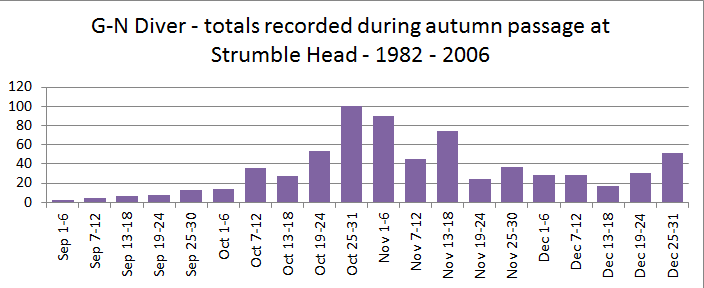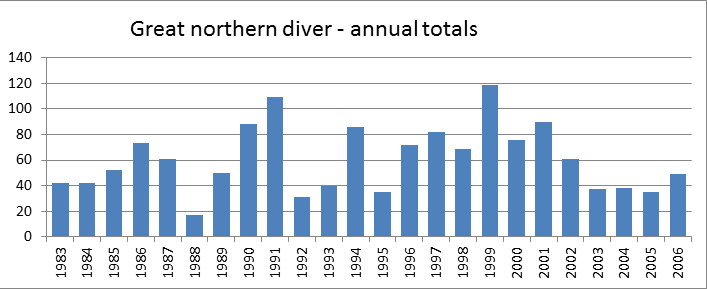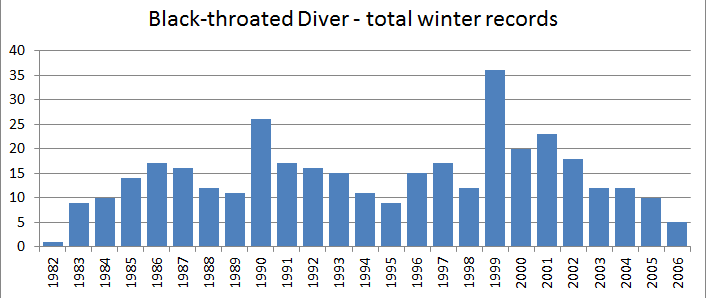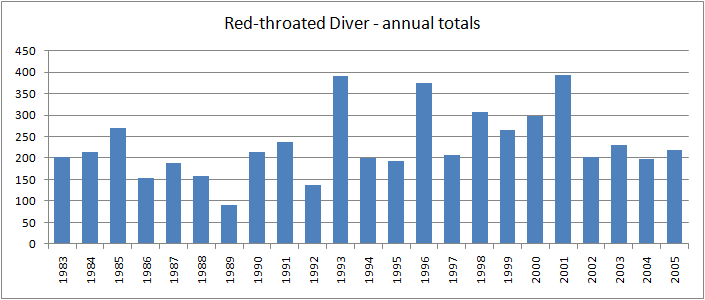Red-throated Diver - 1994
 Sunday, December 11, 2011 at 6:20PM
Sunday, December 11, 2011 at 6:20PM Winter visitor and passage migrant. Recorded in every month except June
Mathew (1894) classified the Red-throated Diver as "the commonest of the three divers that visit our bays and estuaries", and noted Fishguard Harbour and Milford Haven as being particularly good localities. Lockley et al. (1949) also considered it a common visitor, especially to Milford Haven but also "frequent at sea near coasts and islands". Lockley (1961) stated that the Red-throated Diver was more frequently seen than other species of diver. The diaries of Bertram Lloyd for 1925-1937 enable us to compare the statements above with the current situation and his record is consistent with modern findings, so it is probable that the status of the Red-throated Diver has not changed for at least the last 60 years or so. It remains the commonest of the diver species occurring in Pembrokeshire, but is no longer frequent in the Cleddau Estuary (the Milford Haven of Mathew and Lockley et al.) where now only one or two appear, sporadically and mostly at the seaward end.
Red-throated Divers can be found all around the outer coastline in winter. Usually only one to three birds are seen at each locality but they occasionally congregate at favoured tide-races or bays, especially following onshore gales, when up to 18 have been seen off Giltar, 20 in St Bride's Bay, 23 in the Amroth—Saundersfoot area and 40 off Strumble Head. However an exceptional gathering of 200 was at Amroth in late February and early March 1993. Singles at Llysyfran reservoir and Bicton and Hayston Hall farm irrigation reservoirs are the only records from inland waters.
There is a small northerly passage from March to May, when many are in transitional, occasionally in full, summer plumage. The autumn passage south, from September to December (exceptionally from July and August) is of greater volume. Birds in full summer plumage predominate until mid-October, indicating that most juveniles arrive later, though an adult was seen feeding two accompanying juveniles at the Gann on 27 September 1969.






